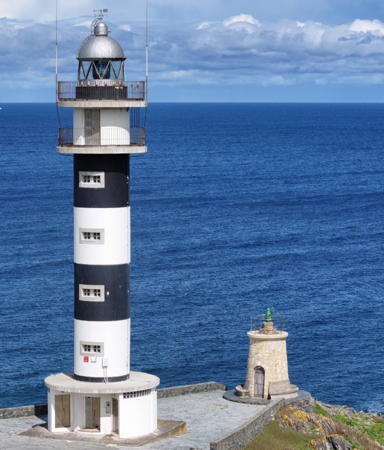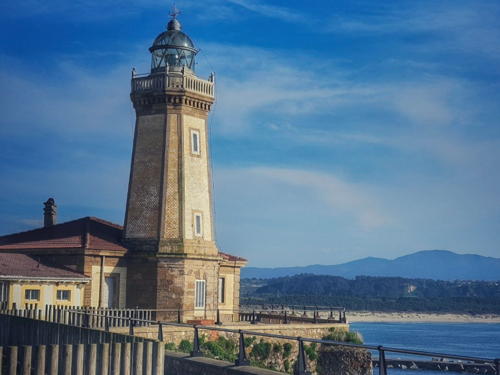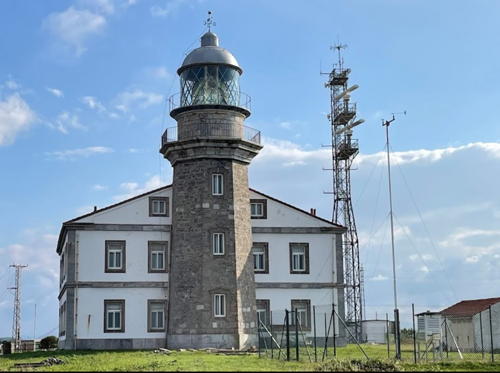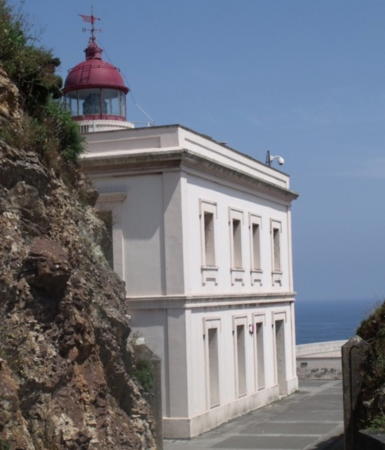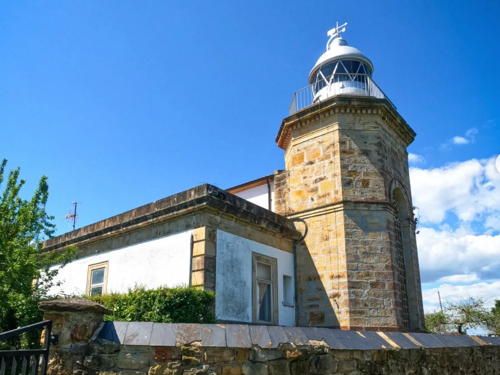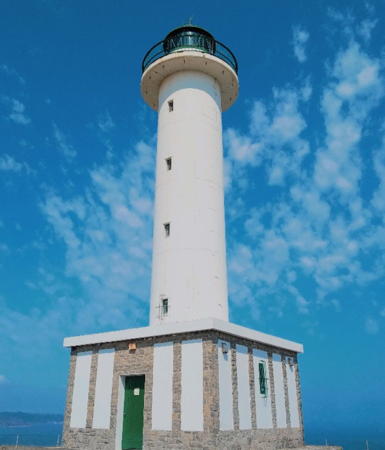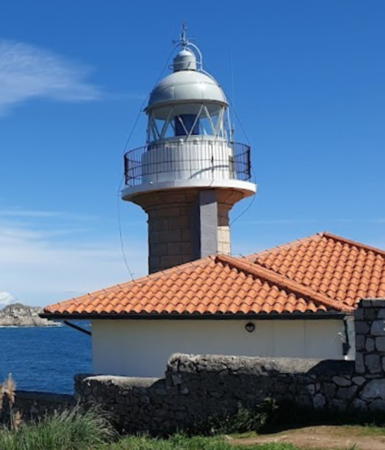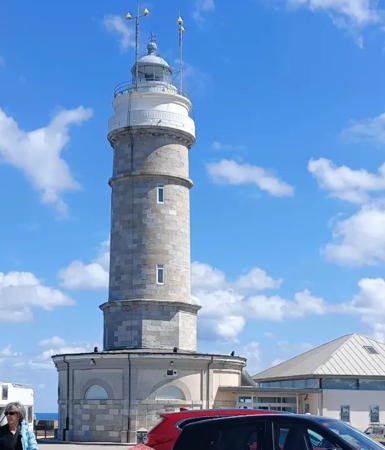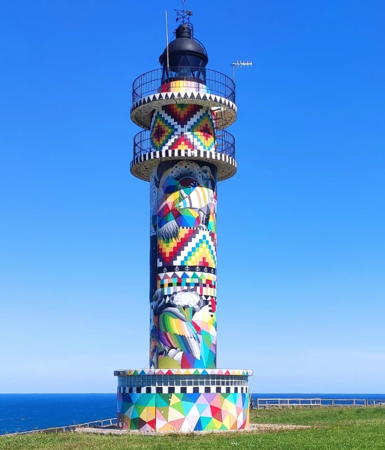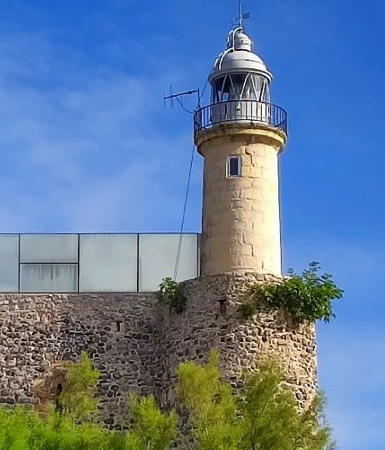The Kingdom of Spain occupies nearly 85% of the Iberian Peninsula in southeastern Europe with coastlines facing south and southeast on the Mediterranean Sea and southwest and northwest on the Atlantic Ocean. Spain also includes the Balearic Islands in the Mediterranean, the Canary Islands in the Atlantic, and the cities of Ceuta and Melilla on the north coast of Morocco.
This page describes lighthouses of the central part of Spain's northern coast, including the provinces of Asturias and Cantabria. This is a beautiful coastline where mountains drop steeply into the sea and occasional water gaps create small sheltered harbors. There are also two major ports on this coast, Santander in Cantabria and Gijón in Asturias.
Spain is divided into 17 regions called autonomous communities (comunidades autónomas); Asturias and Cantabria are two of these communities. In general autonomous communities are divided into provinces, but Asturias and Cantabria are themselves provinces. Both are subdivided into districts called comarcas.
The word for a lighthouse is faro in Spanish and faru in Asturian, but its use is generally restricted to the larger coastal light stations. In Spanish, smaller lighthouses are called balizas (beacons) or farolas. In Spanish isla is an island, cabo is a cape, punta is a promontory or point of land, péñon is a rock, arrecife is a reef, bahía is a bay, ría is an estuary or inlet, estrecho is a strait, río is a river, and puerto is a port or harbor.
The navigational lights in Spain are the responsibility of the national port authority, Puertos del Estado, but many of them are operated and maintained by regional port authorities. The Comisión de Faros, founded in 1842 to build and maintain Spanish lighthouses, is now an advisory panel.
ARLHS numbers are from the ARLHS World List of Lights. ES numbers are from the Spanish national list of lights, Libro de Faros. Admiralty numbers are from volume D of the Admiralty List of Lights & Fog Signals. U.S. NGA List numbers are from Publication 113.
- General Sources
- Libro de Faros y Señales de Niebla
- Online edition of the official Spanish light list.
- Online List of Lights - Spain - Bay of Biscay
- Photos by various photographers posted by Alexander Trabas. Many photos from this area are by Eckhard Meyer, José da Palma, or Arno Siering.
- Lighthouses in Spain
- Excellent aerial photos posted by Marinas.com.
- Faros del Mundo
- Photos and accounts by Carlos Olmo Bosco.
- Lighthouses in Spain
- Photos by various photographers available from Wikimedia.
- World of Lighthouses - Spain
- Photos by various photographers available from Lightphotos.net.
- Puerto de Gijón - Faros
- Data and photos for the eight principal lighthouses of the Gijón area.
- Puerto de Santander - Ayudas a la Navigacíon
- Posted by the Autoridad Portuaria de Santander, this page links to data pages with small aerial photos for all the aids to navigation maintained by the authority.
- Phares d'Europe
- This French-language site by Alain Guyomard and Robert Carceller has pages for many of the lighthouses of northern Spain.
- Leuchttürme Spaniens auf historischen Postkarten
- Historic postcard images posted by Klaus Huelse.
- GPSNauticalCharts
- Navigational chart information for northern Spain.
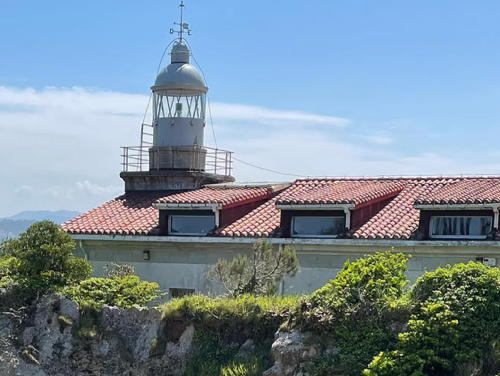
La Cerda Light, Santander, May 2022
Instagram photo by Lukáš Vavřík

Punta Roballera Light, Cudillero, May 2021
Google Maps photo by JAL
